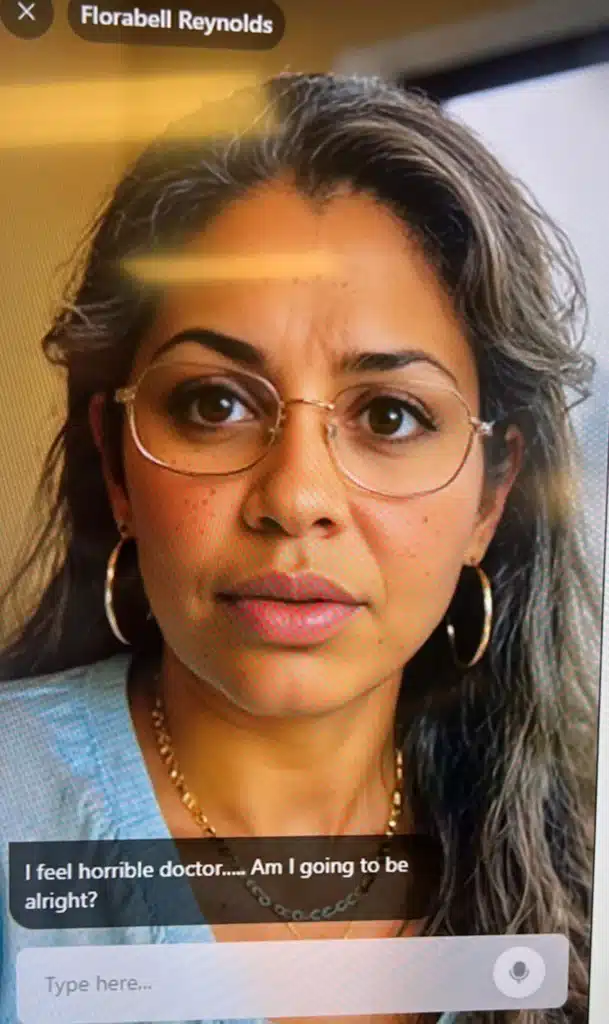Accelerating Competency with AI Patients: How SIU Medicine Is Redefining Medical Training
A Case Study
Name: SIU School of Medicine
Industry: Academics, Healthcare
Company Mission & Vision: Our mission is to optimize the health of the people of central and southern Illinois through education, patient care, research, and service to the community.
Products/Services: An AI-powered patient to train medical students
Target Audiences: Medical Students around the globe
 Training Doctors to Earn Trust—Before They Ever See a Human Patient
Training Doctors to Earn Trust—Before They Ever See a Human Patient
Southern Illinois University School of Medicine (SIU Medicine) is pioneering a bold new approach to medical education—one that harnesses AI-powered avatars to prepare students for the real world of patient care. Using D-ID’s generative AI avatar technology, SIU developed “Randy,” a virtual patient designed to help medical learners practice, make mistakes, build confidence, and, most importantly, learn to earn trust.
Today, Randy—and a growing roster of virtual patients—are being used to safely simulate medical scenarios that students would otherwise only experience for the first time during high-stress clinical rotations. After trying various virtual training options, SIU turned to a smarter, more human solution: an AI-driven program that reshapes how students develop clinical skills and bedside manner.
The Challenge
SIU Medicine originally set out to create a gamified training experience for its medical students, but quickly realized that a game engine couldn’t accommodate the unpredictable nature of real medical learners.
“We realized that you can’t orchestrate a video game for medical students,” said Dr. Richard Selinfreund, associate professor and head of the pathology group at SIU. “They ask the right—but unexpected—questions, and the whole thing crashes.”
On top of that, Dr. Selinfreund was tasked with something games couldn’t replicate: helping future doctors learn to build trust with their patients—arguably one of the most vital (and most overlooked) clinical skills.
The team needed something smarter, more dynamic, and deeply human. They realized the future of medical education wouldn’t be powered by games—it would be powered by AI.
The Solution
SIU Medicine turned to D-ID to bring its virtual patients to life. With D-ID’s Real-Time embedded agents, the team built out a cast of hyper-realistic AI patients powered by a custom large language model (LLM) backend. These avatars simulate conversations with medical learners, adapting in real time to student input and presenting a wide variety of symptoms, conditions, and emotional states.
The flagship patient, “Randy Rhodes,” was designed with different difficulty levels—from beginner to advanced—and trained using documents uploaded into SIU’s custom RAG (retrieval-augmented generation) system. Voices were customized using ElevenLabs to reflect each patient’s condition—sick, short of breath, or fatigued—creating a more immersive and empathetic experience.
The result: an intelligent, responsive AI patient that students can access on their phones, at their own pace, and as many times as they need to build confidence before ever entering a real exam room.
Real Impact: Reducing Anxiety and Accelerating Competency
One of the most challenging skills for new medical students is learning how to take a patient history. It’s also one of the most crucial. “There’s no such thing as a bad history,” Dr. Selinfreund explains, “just bad history-takers.”
By giving students a chance to practice in a safe environment, SIU is helping them build trust, reduce anxiety, and develop critical clinical instincts before the stakes are real.
Students have responded enthusiastically. Some even asked to replace parts of the traditional curriculum with the AI simulations. “A 24-year-old told me, ‘I get to see every disease and practice before I get to the emergency room,’” says Selinfreund. “This generation grew up on phones and screens—this is how they learn.”
Emergency departments have also taken notice, with residency directors seeing the potential for what SIU calls an “acceleration to competency.” Rather than starting from scratch, incoming residents arrive having already practiced core diagnostic conversations.
Scalable, Trusted, and Ready for Growth
SIU’s in-house prompt engineering team built the patient personas and backend integrations but relied on D-ID for avatar creation, infrastructure, and support. “We’re constantly evaluating other platforms,” said Selinfreund, “but one thing D-ID is crushing it on is service. I wouldn’t take any other company into this 10-university alpha trial.”
The large-scale pilot, launched on March 10, brings Randy to medical students worldwide and is expected to generate millions of interactions. To prepare, Dr. Selinfreund routinely stress-tests the system, running Randy through varied scenarios to ensure stability at scale. “We’re about to publish this work, and I need a robust infrastructure and a team I can trust,” he said. “This is a global study—I can’t afford for Randy to crash.”
Separately, the team collects anonymized feedback through REDCap and publishes academic studies to validate outcomes. They also tracked usage in real-world deployments by publishing a QR code in a regional newspaper that connected readers to Randy—and it went off without a hitch.
What’s Next for SIU Medicine

With 11 AI patients already live and new ones being released weekly—including “Alex,” a young adult diabetic—SIU is rapidly expanding its virtual clinic. The next generation of avatars may include body language, hand gestures, and more expressive behaviors to further boost realism and trust-building.
The ultimate goal? Train doctors not just to diagnose, but to connect. “We measure whether medical learners are developing trust with the patient,” says Selinfreund. “That’s the goal.”
As the university moves toward spinning out a company to support and scale this effort, SIU continues to push the boundaries of what’s possible in medical training, with D-ID by their side.
“There’s no way I can train a medical learner with a chatbot. Humans don’t learn that way—they look at
Dr. Richard Selinfreund
faces, read emotions, ask questions, and respond. That’s why we needed avatars.”
associate professor and head of the pathology group at SIU

 Training Doctors to Earn Trust—Before They Ever See a Human Patient
Training Doctors to Earn Trust—Before They Ever See a Human Patient